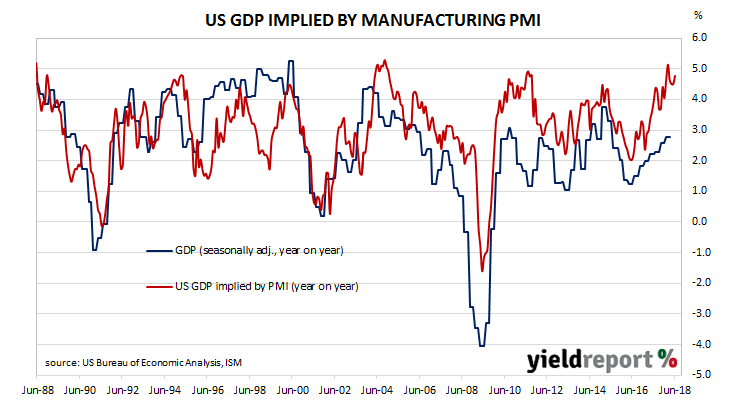Purchasing Managers’ Indices (PMIs) are economic indicators derived from monthly surveys of purchasing and supply executives in private sector companies. They are diffusion indices, which means a reading of 50% represents no change from the previous period, while a reading under 50% implies respondents on average reported a deterioration. Their usefulness lay in being a leading indicator of GDP.
US manufacturing activity rose more than expected in June and the latest figure is very much on the elevated side of past readings. According to the Institute of Supply Management (ISM) June survey, its Purchasing Managers Index recorded a reading of 60.2, up from May’s reading of 58.7 and more than the expected figure of 58. Readings of 60.8 recorded in September 2017 and February 2018 have been the highest in this cycle so far.
According to ANZ senior economist Joanne Masters, the possibility of US tariffs on inputs spurred businesses into action. “It is thought factories were scrambling for inputs ahead of the tariff introduction, which ISM reported the sector is worried about.”

US markets reacted by sending yields higher at the short end while longer term yields did not react. 2 year yields increased by 4bps to 2.56% and 10 year yields remained unchanged at 2.87%. The US dollar moved higher against all major currencies.

